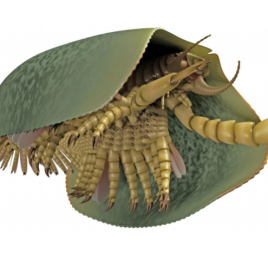
Life reconstruction of the asymmetrically feathered troodontid Jianianhualong tengi (Image by Julius T. Csotonyi 2017 / Xu, Currie, Pittman et al. )
A newly discovered troodontid species is the earliest example of a bird-like dinosaur with asymmetric feathers—a physical trait associated with the evolution of flight. The new species, named Jianianhualong tengi, was described from a nearly complete skeleton with preserved feathers. The fossil dates from the Early Cretaceous period— approximately 100-145 million years ago—and was found in north-eastern China. This dinosaur was nearly a meter long, with a long frond-like tail, and asymmetric feathers on its front and hind limbs. Researchers can’t be certain that Jianianhualong tengi could fly; nevertheless, the presence of asymmetric feathers points to the development of aerodynamic features in bird ancestors earlier than previously thought.
Authors:
Xing Xu, Philip Currie, Michael Pittman, Lida Xing, Qingjin Meng, Junchang Lü, Dongyu Hu & Congyu Yu
Canadian author:
Philip Currie, Department of Biological Sciences, University of Alberta, Edmonton, AB, Email: philip.currie@ualberta.ca
Original paper published in Nature Communications on May 2, 2017.



